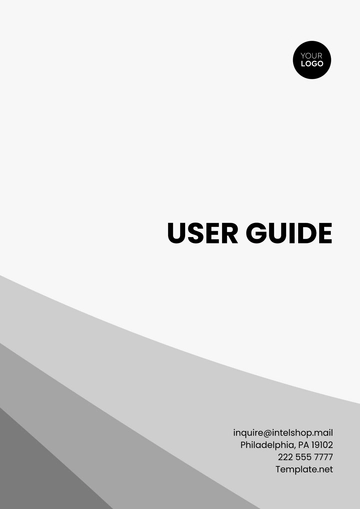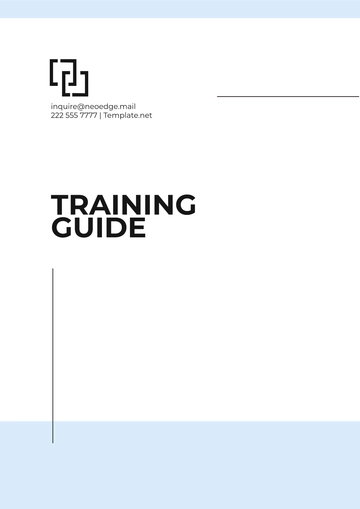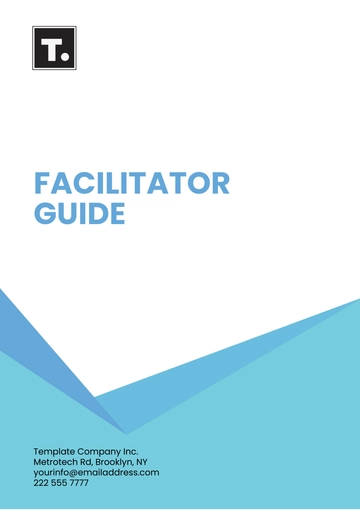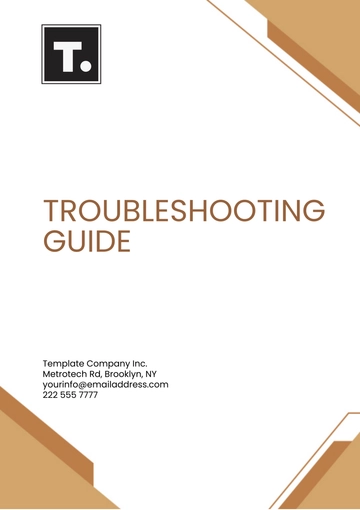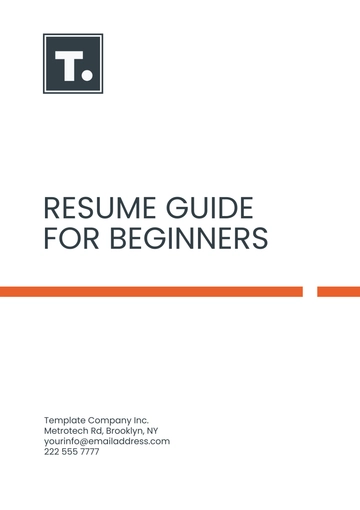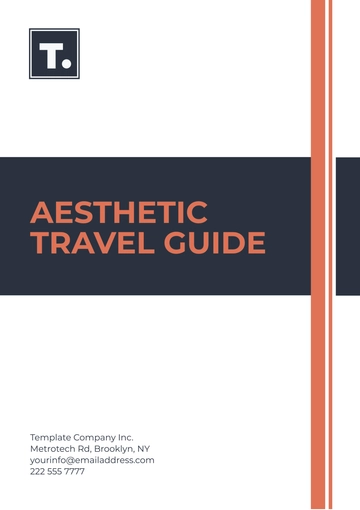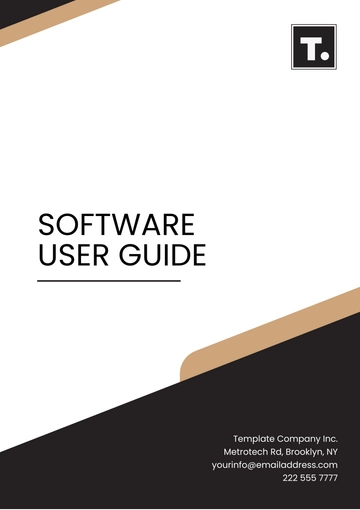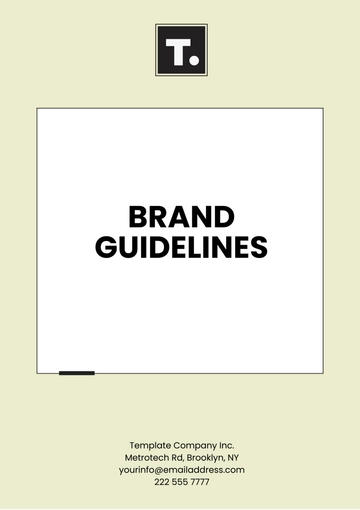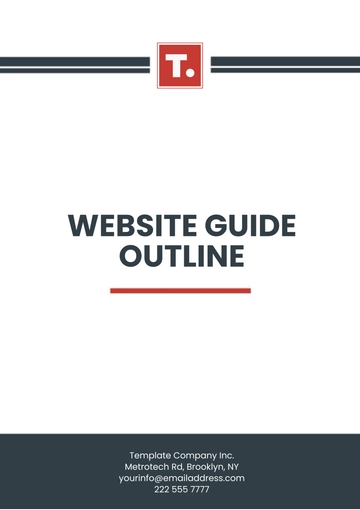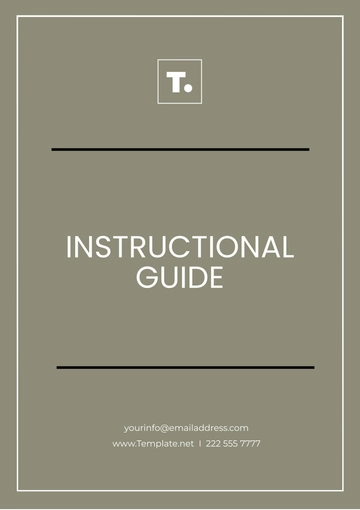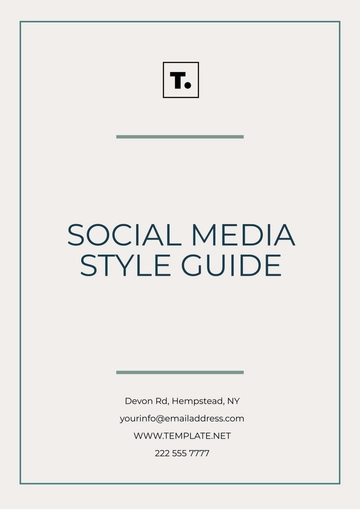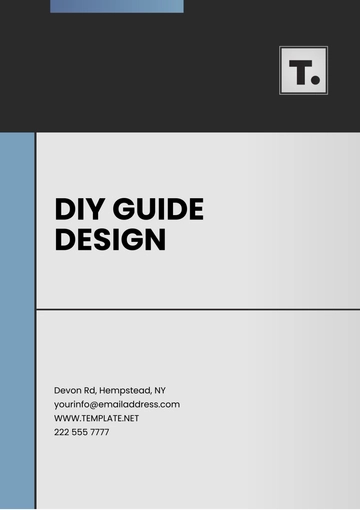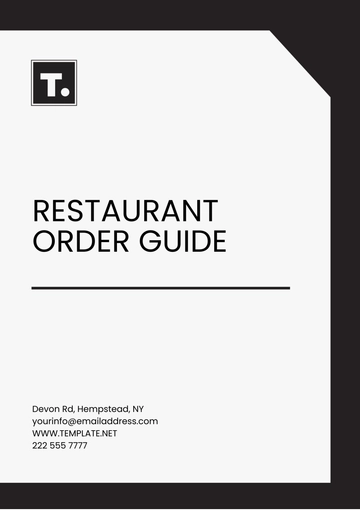Free Value Proposition Canvas Advertising Guide
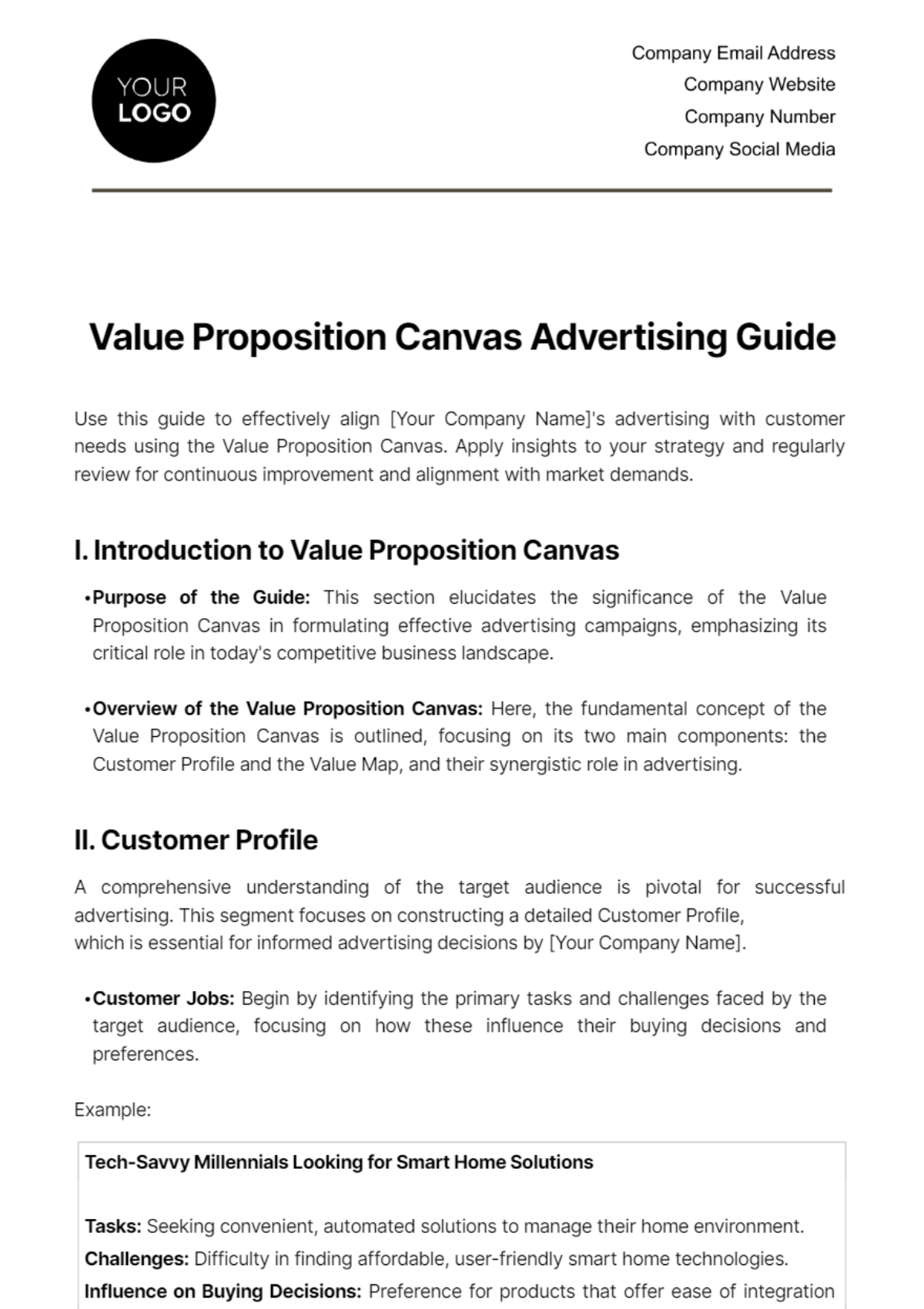
Use this guide to effectively align [Your Company Name]'s advertising with customer needs using the Value Proposition Canvas. Apply insights to your strategy and regularly review for continuous improvement and alignment with market demands.
I. Introduction to Value Proposition Canvas
Purpose of the Guide: This section elucidates the significance of the Value Proposition Canvas in formulating effective advertising campaigns, emphasizing its critical role in today's competitive business landscape.
Overview of the Value Proposition Canvas: Here, the fundamental concept of the Value Proposition Canvas is outlined, focusing on its two main components: the Customer Profile and the Value Map, and their synergistic role in advertising.
II. Customer Profile
A comprehensive understanding of the target audience is pivotal for successful advertising. This segment focuses on constructing a detailed Customer Profile,
which is essential for informed advertising decisions by [Your Company Name].
Customer Jobs: Begin by identifying the primary tasks and challenges faced by the target audience, focusing on how these influence their buying decisions and preferences.
Example:
Tech-Savvy Millennials Looking for Smart Home Solutions Tasks: Seeking convenient, automated solutions to manage their home environment. Challenges: Difficulty in finding affordable, user-friendly smart home technologies. Influence on Buying Decisions: Preference for products that offer ease of integration with existing devices and are budget-friendly. |
Gains and Pains: This list details the perceived benefits (Gains) and challenges (Pains) of your customers, providing insight into their decision-making processes.
Example:
Tech-Savvy Millennials: Smart Home Solutions Gains: Convenience, time-saving, enhanced home security. Pains: High costs, complexity in setup and use, compatibility issues with existing devices. |
Customer Insights: Conclude with an analysis of customer behaviors, trends, and preferences, using data-driven research methods to gather actionable insights.
Example:
Tech-Savvy Millennials: Smart Home Solutions Behavior: Prefers shopping online, and reads reviews before purchasing. Trends: Growing interest in voice-controlled devices and eco-friendly technology. Preferences: Products with a sleek design, easy integration, and remote accessibility. |
III. Value Map
The Value Map is the intersection of [Your Company Name]'s offerings and customer desires. This section is dedicated to aligning what the company offers with customer expectations, ensuring precision in advertising messages.
Products & Services: Detail the key offerings of [Your Company Name], focusing on their features and benefits.
Example:
Eco-Friendly Personal Care Line by [Your Company Name] Key Offerings: [Your Company Name] offers a range of eco-friendly personal care products, including biodegradable shampoos, conditioners, body washes, and lotions. Features: All products are made with natural, organic ingredients and are free from harsh chemicals. The packaging is 100% recyclable and designed to minimize waste. Benefits: These products provide a safe and natural alternative to traditional personal care items, promoting skin and hair health without harming the environment. |
Pain Relievers: Clarify how these offerings address specific customer pains, showcasing the problem-solving aspects of your products or services.
Example:
By using biodegradable and recyclable materials, [Your Company Name]'s products address the growing concern among consumers about the environmental impact of their purchases. |
Gain Creators: Accentuate how your offerings provide added value to the customer, enhancing their experience or solving key issues.
Example:
The use of natural ingredients supports overall health and wellness, aligning with customers’ desires for products that are beneficial for both their body and the environment. |
IV. Fit Between Customer Profile and Value Map
The optimal fit between customer needs and company offerings is crucial. This section assesses the alignment between [Your Company Name]'s products/services and the customer jobs, gains, and pains, pinpointing improvement areas.
Alignment Analysis: Evaluate the congruence between the offerings and customer needs, critically analyzing the effectiveness of your products/services in addressing these needs.
Gap Identification: Identify any discrepancies or shortcomings in your offerings, focusing on areas where customer expectations are not fully met.
Recommendations for Improvement: Provide strategic suggestions for enhancing the alignment between your offerings and customer needs, based on the identified gaps.
V. Creating Effective Advertising Messages
The creation of impactful advertising messages is vital. This section provides guidance for [Your Company Name] in developing messages that accurately reflect the insights gained from the Value Proposition Canvas.
Message Development: Formulate advertising messages that underscore the unique value proposition of your products or services, ensuring they resonate with the identified customer needs.
Example: "Experience Nature's Touch: Our Eco-Friendly Personal Care Products Bring the Best of the Earth to Your Daily Routine."
This message highlights the natural, organic nature of the products, appealing directly to environmentally conscious consumers seeking sustainable beauty solutions.
Channel Strategy: Propose the most effective channels for disseminating these messages, focusing on mediums that have the highest reach and impact among your target audience. For example, leverage social media platforms like Instagram and eco-conscious blogs for advertising, as these channels are frequented by the target audience of environmentally aware, young adults.
Tone and Style Guidelines: Establish guidelines for the tone and style of your advertising, ensuring consistency and alignment with your brand identity and audience preferences. For example, maintain a tone that is informative yet inspiring, focusing on the positive impact of using eco-friendly products. The style should be clean, fresh, and nature-inspired.
VI. Testing and Feedback
This section outlines methodologies for [Your Company Name] to test its advertising messages and campaigns, ensuring their efficacy and resonance with the target audience.
Testing Methods: Outline various approaches for testing the effectiveness of advertising messages, such as A/B testing, focus groups, or pilot campaigns.
Feedback Collection and Analysis: Detail procedures for collecting and analyzing customer feedback, utilizing tools like surveys, social media analytics, and sales data to measure impact and adjust strategies accordingly.
Adjustment Strategies: Conclude with strategies for adapting advertising based on feedback, focusing on iterative improvements and responsiveness to customer insights.
VII. Implementation and Monitoring
This section guides [Your Company Name] through the implementation of the developed strategies and establishes a framework for ongoing evaluation and adjustment.
Action Plan: Develop a comprehensive action plan for executing the advertising strategy. This should include a detailed timeline, resource allocation, and defined roles and responsibilities within [Your Company Name]. Ensure that every aspect of the plan aligns with the insights gained from the Value Proposition Canvas.
Monitoring and Adjustments: Establish a robust monitoring system to track the performance of advertising campaigns. Utilize key performance indicators (KPIs) relevant to [Your Company Name]'s goals, such as engagement rates, conversion rates, and return on advertising spend. Regularly review these metrics to assess the effectiveness of the campaigns.
Responsive Strategy Refinement: Emphasize the importance of agility in advertising strategies. Be prepared to make swift adjustments based on real-time data and feedback. This section should guide [Your Company Name] in identifying when and how to pivot strategies to optimize advertising effectiveness and ensure that the campaigns continue to resonate with the target audience.
Prepared by:
[Your Name],
[Your Job Title]
[Your Company Name]
[Your Email]
- 100% Customizable, free editor
- Access 1 Million+ Templates, photo’s & graphics
- Download or share as a template
- Click and replace photos, graphics, text, backgrounds
- Resize, crop, AI write & more
- Access advanced editor
Introducing Template.net's Value Proposition Canvas Advertising Guide Template. Editable and customizable, this tool empowers you to refine your value proposition strategy. With our Ai Editor Tool, craft compelling advertising plans tailored to your audience. Drive success and differentiate your brand with Template.net's innovative solutions.


